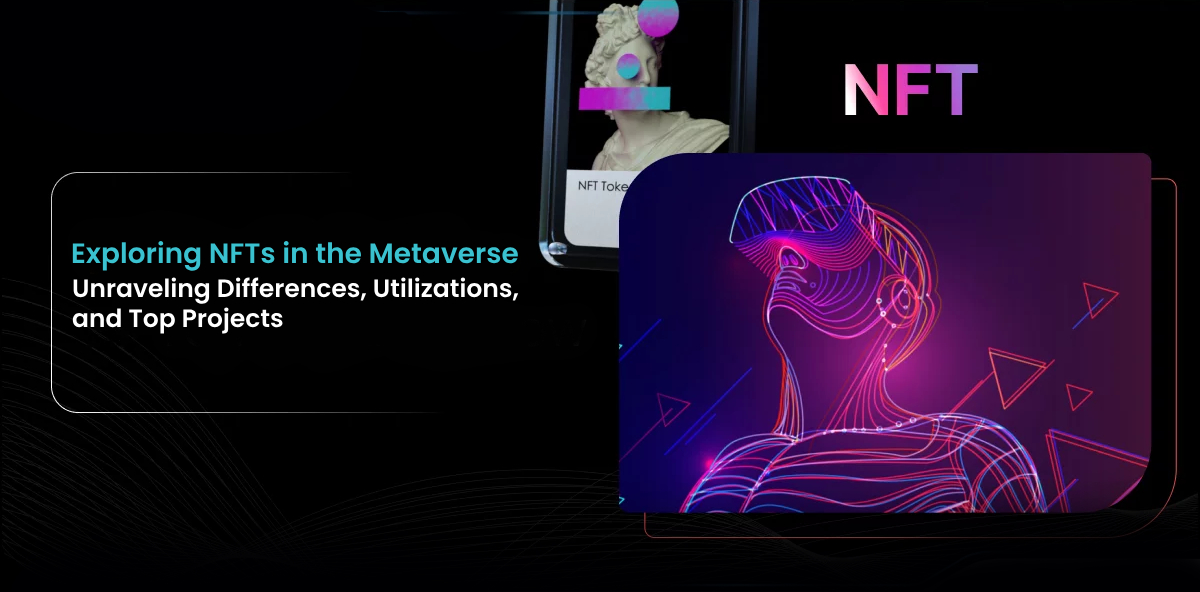As the metaverse continues to capture the collective imagination, the integration of Non-Fungible Tokens (NFTs) within this digital realm has become a focal point of discussion. In this comprehensive exploration, we delve into the intricacies of NFTs in the metaverse, highlighting differences, and practical applications, and showcasing top projects that are reshaping the landscape.
Understanding NFTs in the Metaverse
What are NFTs?
Non-Fungible Tokens, or NFTs, are unique digital assets stored on a blockchain, each possessing distinct characteristics that set them apart. In the metaverse context, NFTs serve as digital collectibles, representing ownership of virtual items, art, or even parcels of virtual land.
The Metaverse Unveiled
The metaverse is a virtual space where users can interact with a computer-generated environment and other users in real time. It's a digital universe that goes beyond traditional online experiences, blurring the lines between the physical and virtual worlds. NFTs play a pivotal role in this immersive digital ecosystem.
Differences in NFTs within the Metaverse
Metaverse NFTs vs. Traditional NFTs
While the underlying concept of NFTs remains consistent, metaverse NFTs differ in terms of utility and purpose. Unlike traditional NFTs that often represent static digital assets, metaverse NFTs unlock a wide array of interactive experiences. From virtual real estate to in-game items, these tokens serve as the bridge between the physical and digital realms.
Interoperability and Standardization
One key aspect that sets metaverse NFTs apart is their interoperability. In the metaverse, users can seamlessly transfer and use NFTs across various virtual platforms. Standardization initiatives ensure that these tokens can function seamlessly, regardless of the metaverse ecosystem they inhabit.
Utilizing NFTs in the Metaverse
Virtual Real Estate and Digital Ownership
One of the groundbreaking applications of NFTs in the metaverse is the concept of virtual real estate. Users can purchase, sell, and trade parcels of virtual land, with NFTs serving as proof of ownership. This dynamic opens up new economic opportunities and creative possibilities within the digital landscape.
In-Game Assets and Personalization
Metaverse NFTs extend their influence into gaming, offering players the ability to own and trade in-game assets as NFTs. From unique character skins to powerful weapons, these tokens add a layer of personalization and value to the gaming experience, creating a virtual economy within the game world.
Top Metaverse NFT Projects
Decentraland (MANA)
Decentraland stands as a pioneer in the metaverse, offering a decentralized virtual world where users can buy, sell, and develop on virtual land. MANA, the native cryptocurrency, fuels transactions within the platform, making it a key player in the metaverse NFT space.
CryptoVoxels (CV)
Cryptovoxels combines virtual reality, blockchain, and art. Users can purchase virtual parcels of land and build structures or art installations. The platform uses Ethereum-based NFTs, allowing for seamless ownership transfer and integration with other metaverse projects.
Metaverse NFT Marketplace Development: A Glimpse into the Future
The development of metaverse NFT marketplaces is poised to be a transformative force. As more users immerse themselves in the metaverse, the demand for seamless, secure, and user-friendly platforms to buy, sell, and trade NFTs will surge. Entrepreneurs and developers exploring metaverse NFT marketplace development should prioritize interoperability, security, and a user-centric experience to thrive in this evolving landscape.
In conclusion, the intersection of NFTs and the metaverse presents a paradigm shift in how we perceive and interact with digital assets. From virtual real estate to in-game economies, the possibilities are expansive. Stay tuned for the unfolding narrative of metaverse NFTs, where the digital and physical worlds seamlessly converge.





Comments